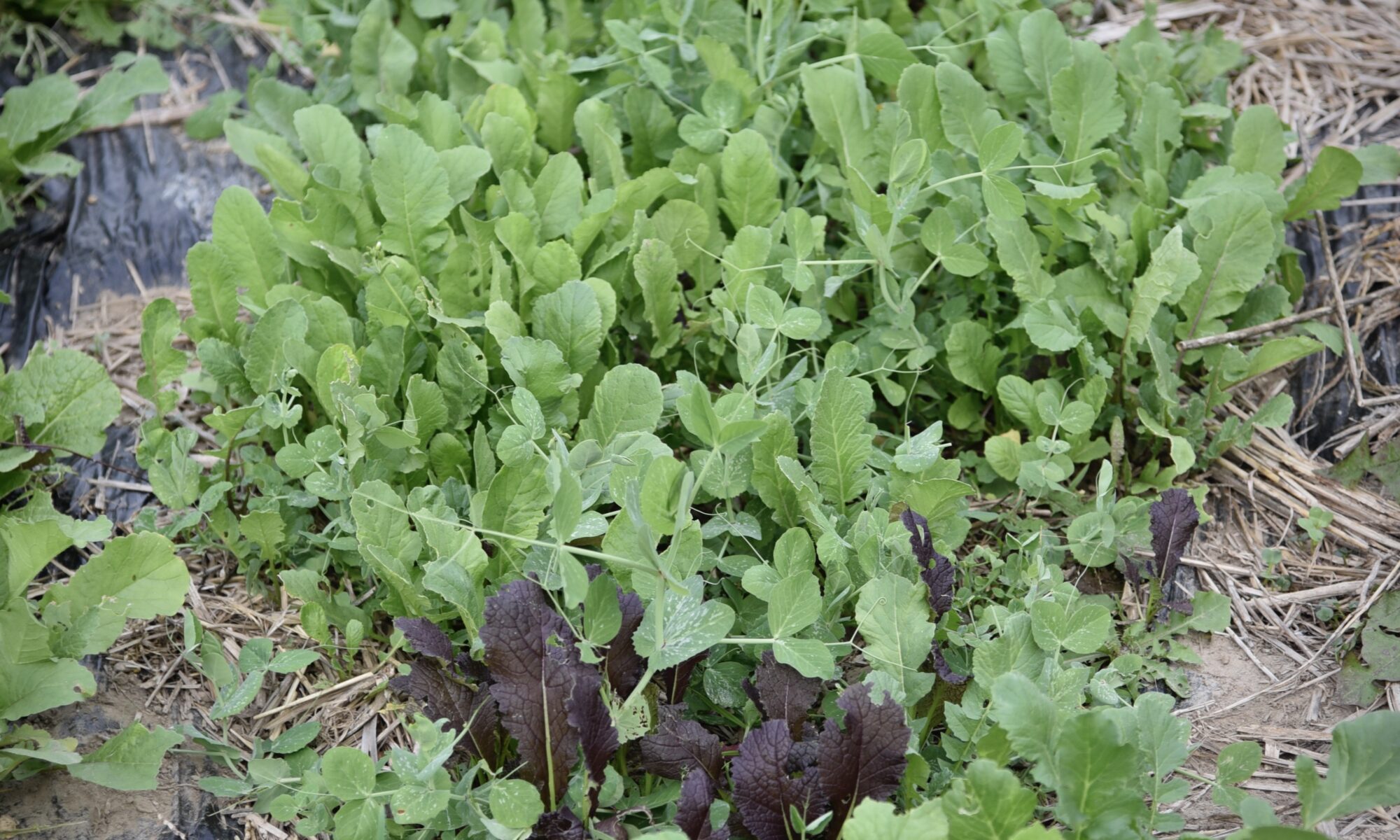Plowing and turning over soil disrupts critical functions of soil microbial and fauna communities, which play a significant role in making soils healthy, living ecosystems. Regenerative land management encourages practices like no-till, low-till, and implementing perennial plants to disrupt the soil as little as possible. Reducing tillage can minimize soil erosion, decrease the demand for chemical inputs, and foster more resilient agricultural systems.
Tillage has long been considered an integral part of field preparation, a practice deeply ingrained in the image of agriculture. However, this conventional approach is increasingly challenged by research and the success of no-till agriculture, a farming method that emphasizes minimal soil disturbance.
During Regeneration Canada’s 2023 Stories of Regeneration tour, we visited Bla-Kar Farms, Blake Vince’s multi-generational grain farm in Southwestern Ontario. Along with his wife Karen, Blake represents the fifth generation to farm their land. His farm, characterized by heavy clay soils and flat topography, showcases the effectiveness of minimal soil disturbance. Practicing no-till since 1983, Blake’s commitment to soil health is well-known, exemplified by the Soil Your Undies project, demonstrating the stark differences in soil microbial activity between long-term no-till and conventionally tilled fields.
What is Soil Disturbance?
Soil disturbance is any activity that disrupts the soil, including biological, chemical, and physical disturbances:
● Biological disturbance occurs when animals overgraze an area, limiting the ability of plants to grow and photosynthesize. This reduces the amount of carbon dioxide that plants can absorb from the atmosphere, and can also lead to soil erosion.
● Chemical disturbance occurs when fertilizers and pesticides are over-applied, which can disrupt the soil food web, damage the soil structure, and make it more difficult for plants to grow, potentially leading to water pollution.
● Physical disturbance, which is the focus of this article, occurs when the soil is tilled, plowed, or otherwise compacted by excessive livestock trampling or machinery use. Disrupting the soil structure breaks up soil aggregation and reduces pore space available for air and water, creating a less hospitable environment for soil organisms, heightening soil vulnerability to erosion and diminishing its capacity to retain water.
At Blake’s farm, these disturbances are reduced to a minimum to allow the microorganisms in the soil to thrive. Digging in his corn fields, you’ll find an abundance of life, from earthworms to microorganisms observable only through a microscope.
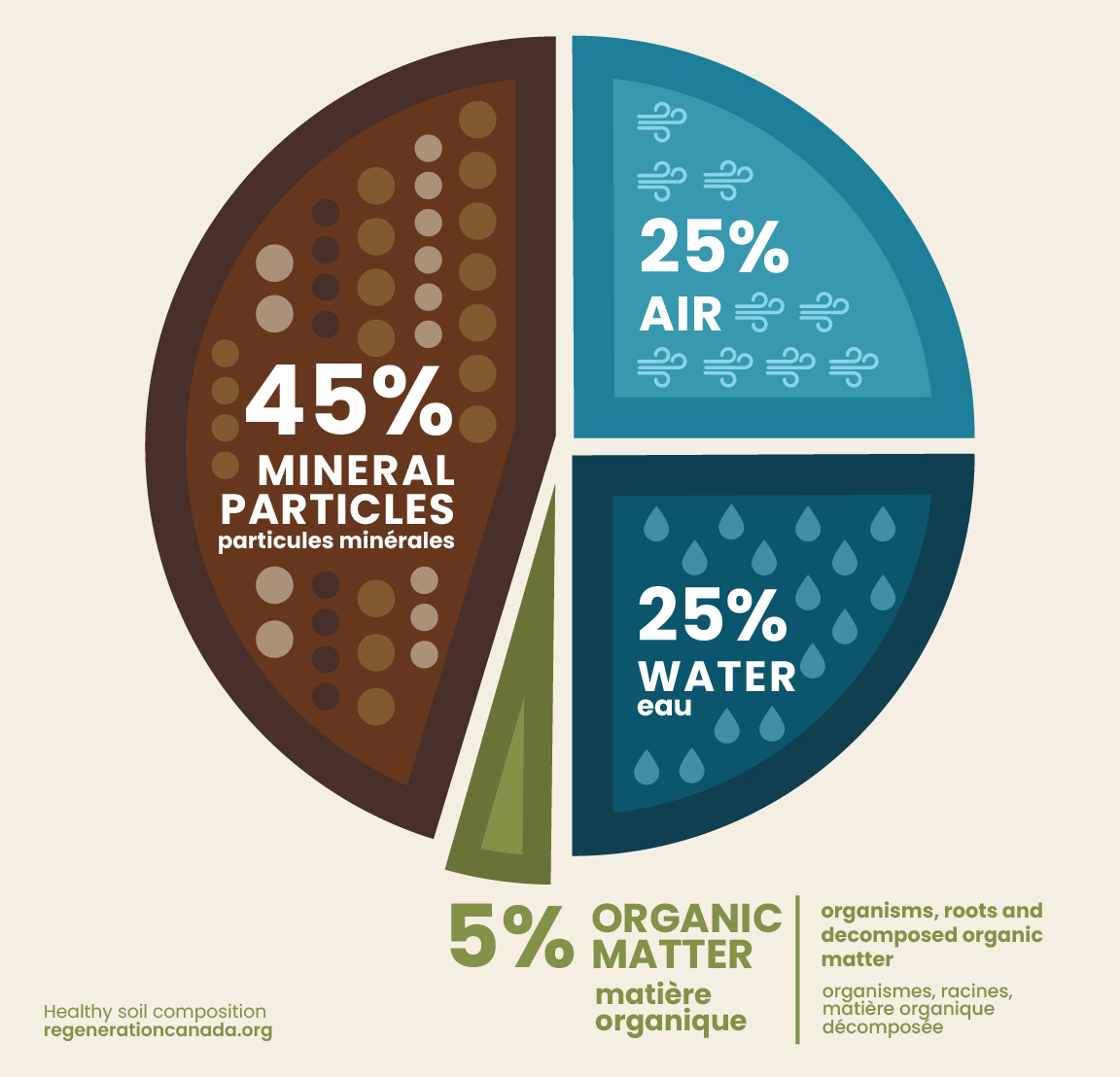
The Delicate Balance of Soil Structure
Beneath our feet lies a dynamic realm that is crucial for sustaining life—soil. Soil weaves together minerals, organic compounds, and a vast web of microorganisms into a porous, sponge-like structure. This architecture can absorb and retain water, nutrients, and air that plants need to thrive. Tiny pores provide passageways for oxygen, moisture, and roots to permeate the soil. Soil aggregates, the building blocks of soil, are bound together by plant root exudate compounds, and make up soil structure. This foundation sustains a diverse array of organisms within the rich darkness beneath the surface.
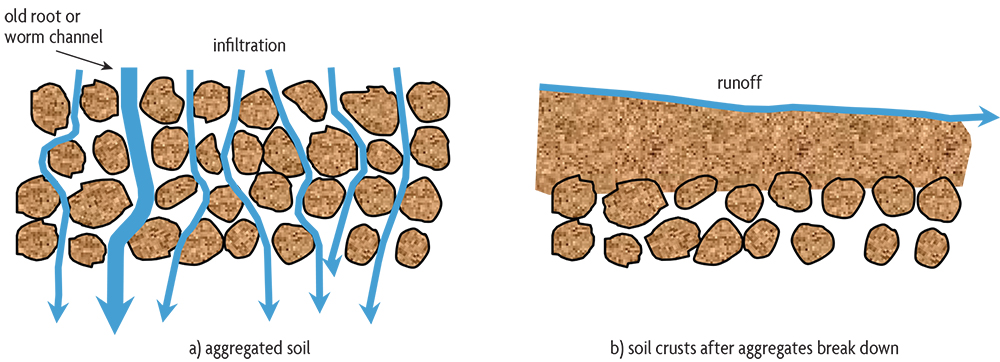
The Impacts of Soil Disturbance on Soil Health
The consequences of soil disturbance extend far beyond the immediate disruption of soil structure. Over time, tillage leads to a cascade of detrimental effects:
● Organic Matter Loss: Tillage accelerates the breakdown of soil organic matter, fracturing soil aggregates. This releases organic matter for rapid decomposition by microbes, diminishing soil fertility and water-holding capacity. The more soil is disturbed through tillage, the higher the risk of organic matter breakdown.
● Erosion: By disrupting soil structure, tillage also destroys large water-conducting channels, leaving the soil vulnerable to erosion. This erosion, accelerated by the loss of soil structure and protective plant cover, sweeps away topsoil from the A horizon, the most fertile layer of soil, leaving behind a depleted landscape. This topsoil is a precious resource that takes decades to form, making its preservation crucial for sustaining agricultural productivity and environmental integrity. This concern is especially relevant in areas characterized by heavy clay soil, since clay particles are particularly fine and thus more prone to erosion than soils with higher sand contents. Erosion reduces agricultural productivity and pollutes waterways with sediment.
● Soil Carbon Loss: When plows fluff up the soil, they accelerate the mineralization of soil organic carbon. This process releases stored carbon dioxide (CO2) into the atmosphere, contributing to climate change. The more intensive the tillage method, the greater the loss of soil carbon.
● Compaction: The repeated churning of soil leads to compaction, which tightly compresses soil particles together, reducing air and water infiltration. This hampers root growth, impedes nutrient uptake, and increases the risk of erosion.
● Increased chemical inputs: The loss of organic matter through tillage often necessitates increased chemical inputs for fertility and productivity.
The Unseen Impacts on Soil Biology
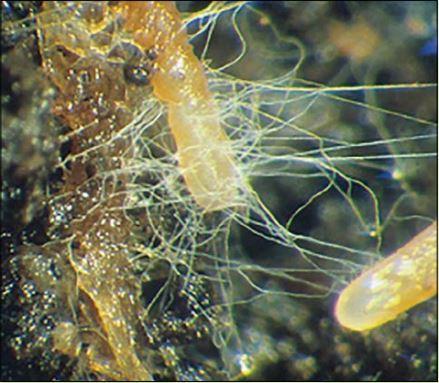
The impact of soil disturbance extends to the unseen realm of soil microorganisms. It ruptures the intricate soil food web, destroying communities of beneficial organisms such as bacteria, fungi, protozoa, and nematodes. These microorganisms play an essential role in maintaining soil health and supporting plant growth. Certain bacteria convert nitrogen gas from the atmosphere into a form accessible to plants, while other organisms dissolve minerals. It may create confusion that soil disturbance initially provides a temporary feast for soil microbes, but it eventually leads to the depletion of their food supply, resulting in a declined population over time.
Mycorrhizal fungi, in particular, are severely affected by tillage. These symbiotic fungi form intricate networks in the soil, establishing a mutually beneficial relationship with the roots of most crop plants, enhancing nutrient uptake and plant growth. These networks also play a crucial role in binding soil particles together, creating aggregates that enhance soil structure. Unfortunately, tillage severs these hyphal networks and encourages the growth of harmful organisms over beneficial mycorrhizal fungi and other symbiotic organisms. Over time, this shift in the microbial balance can have detrimental consequences for soil health, diminishing nutrient cycling and overall ecosystem resilience.
The absence of a robust microbial community disrupts crucial ecosystem functions like soil aggregation, mineralization, and water retention. Without these organisms to decompose organic matter and keep soil particles together, the soil becomes more susceptible to damage from rain, wind, and sun.
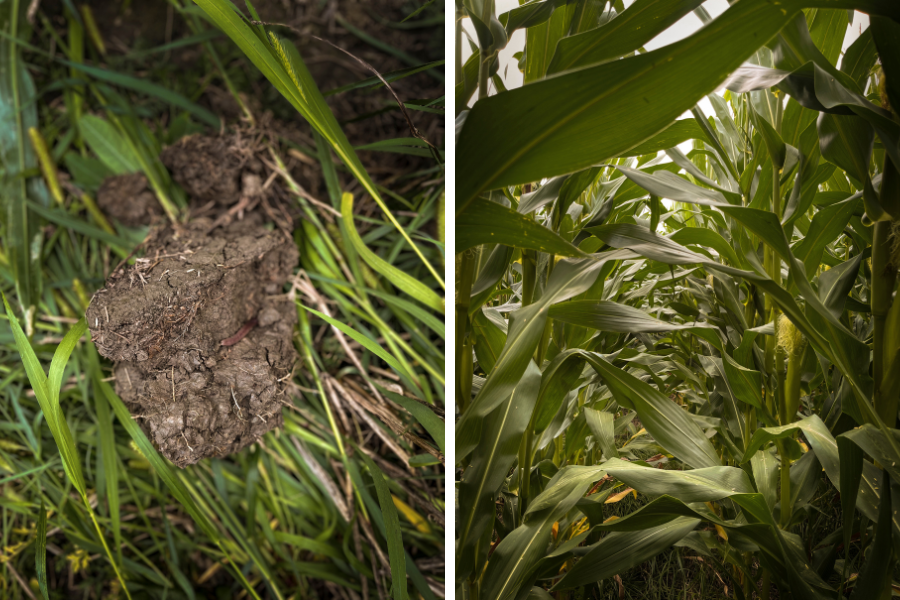
So, Why Do People Till?
When Blake’s family started farming in Southwestern Ontario, tilling the fields was the only common knowledge shared amongst the farmers in the area, who supported that tillage provided an effective means of destroying weeds, encouraging water infiltration through crusts, accelerating field drying for early planting, creating a soft seedbed, levelling the fields, and turning under a build-up of crop residues or green manures. However, what no one recognized at the time was that these advantages are often short-lived, causing long term negative effects on soil health. As research and machinery have advanced, our understanding of the many pitfalls of disturbing our soils has expanded. In modern agriculture, we now have plenty of regenerative alternatives to tillage that are suitable for a plethora of agricultural systems.

All over the country [some soils are] worn out, depleted, exhausted, almost dead.
But here is comfort: These soils possess possibilities and may be restored to high
productive power, provided you do a few simple things.
—C.W. BURKETT, 1907

Minimizing Soil Disturbance through Regenerative Practices
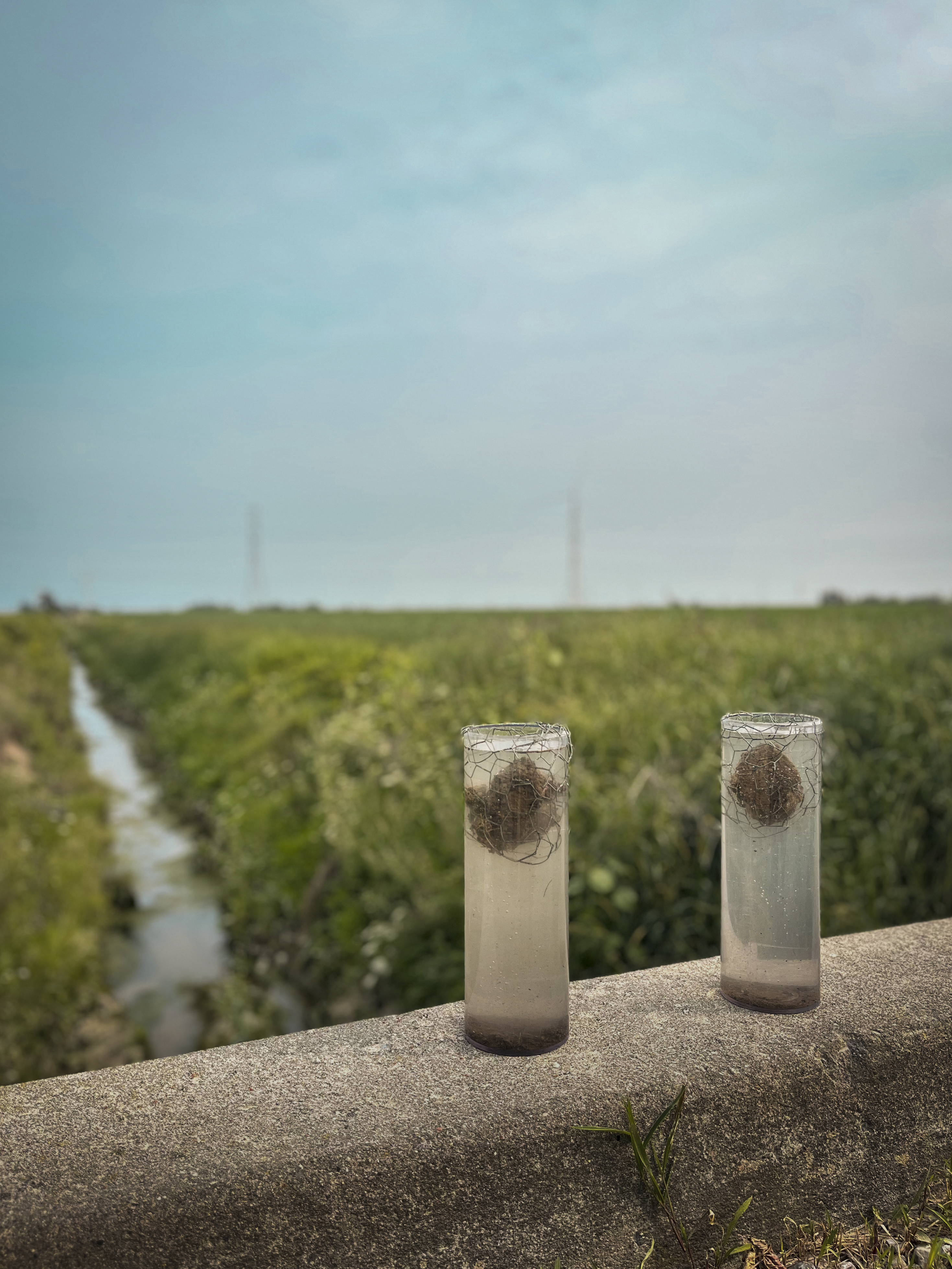
Recognizing the detrimental impacts of soil disturbance, farmers and gardeners are increasingly adopting practices that minimize soil disruption and promote soil health. These practices include:
● No-till farming: Eliminates plowing altogether, preserving soil structure and promoting increased organic matter levels, which, in turn, supports earthworm populations, contributing to enhanced residue breakdown and improved water infiltration.
● Low-till farming: Uses minimal tillage and only disturbs the soil as much as necessary for planting.
● Cover cropping, mulching, and ground-covering: Incorporates cash crops and cover crops in rotation to help suppress weeds, nourish the soil, and protect the ground from erosion year-round.
● Rolling and crimping: Terminates cover crops by injuring the plant without cutting the stems.
● Flail mowing: Cuts and sheds plant materials through the mower’s rotating blades, aiding in weed suppression and maintaining soil structure.
● Planting perennials: Provides permanent ground cover, reducing the need for tillage.
● Careful livestock management: Overgrazing can damage soil structure and leave the soil vulnerable to erosion. Proper management minimizes soil disturbance from livestock by strategically planning grazing practices and avoiding grazing during wet conditions.
At Bla-Kar Farms, a combination of these regenerative practices has been instrumental in maintaining soil structure, preventing erosion, and enhancing soil health. No-till practices have been particularly successful, while the use of diversified cover crop mixes between grain corn, soybeans, and winter wheat provides additional benefits for soil health and nutrient cycling.
Blake also devotes a large portion of his land to pastures, some growing as high as 3 feet tall, boasting diverse species of plants and bugs interacting above and below ground. It is within his plans to host tours and visits to these fields in the future, to show not only their abundance of life, but to explain the myriad of ecological services and soil improvements that can be provided if left alone for alternating periods of time. Results that will be observable in the quality of future crops or the animals who graze them.
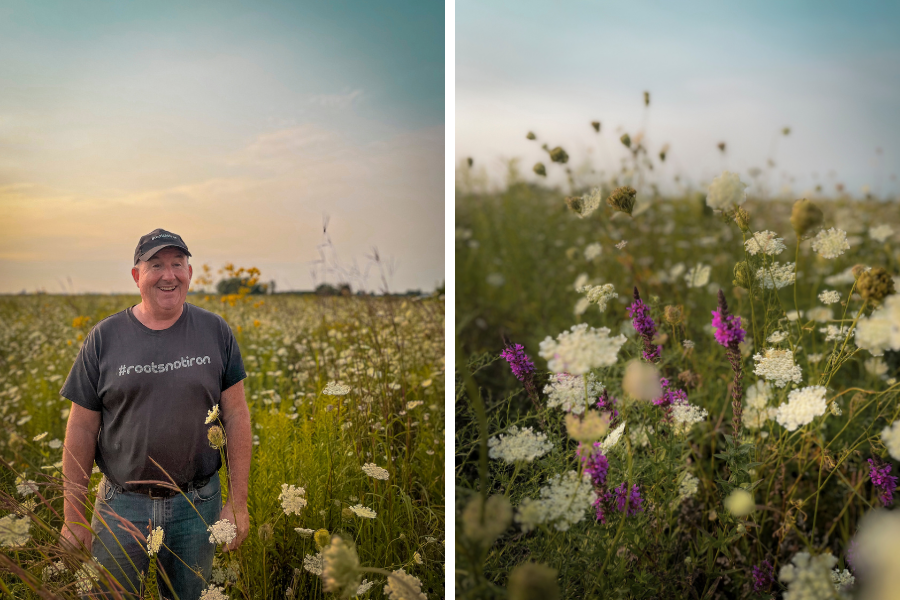
Healthy, living soil is the foundation of any thriving agroecosystem. Without a vibrant soil microbiome, the entire ecosystem suffers—crop health declines, resistance to drought falters, and soils become dependent on chemical fertilizers and irrigation to remain productive. By minimizing soil disturbance through no-till and low-till practices, we can protect this precious resource and reap the benefits of healthier soils, increased crop yields, and a more resilient food system.
To know more about regenerative practices at Bla-Kar Farms, listen to the podcast episode and watch the short film interview with Blake Vince.
Stay updated with our Principles of Regenerative Land Management blog series by subscribing to our newsletter and following our social media channels. We are delighted to have you on this journey with us!
If you have any questions or comments about the topics covered in this blog post, please contact our Education & Research Manager at: paige@regenerationcanada.org. If you have questions specific to the Stories of Regeneration campaign, please connect with our Campaign Manager at: alieska@regenerationcanada.org.

